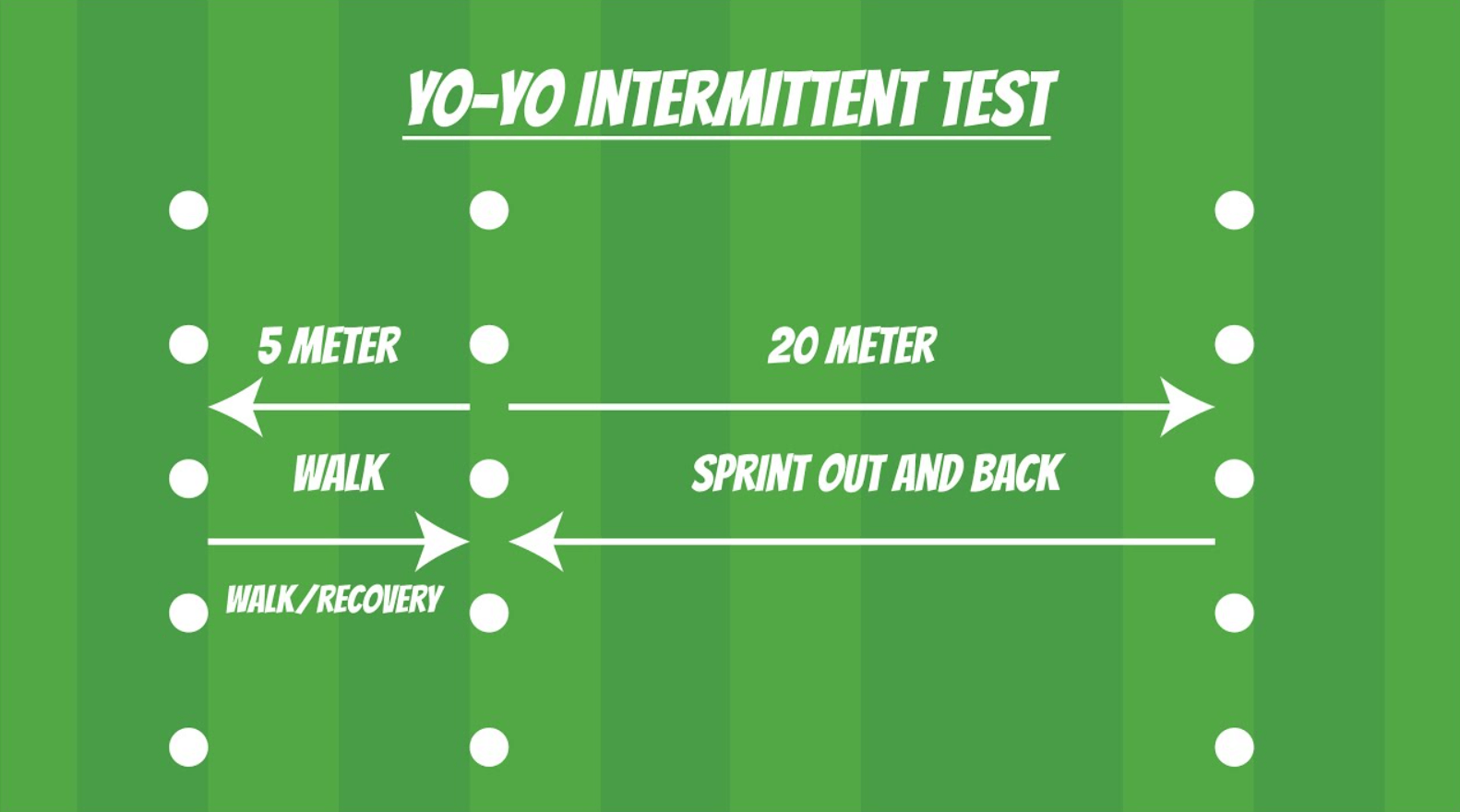

The Yo-Yo fitness test is an evaluation test for the estimation of an athlete’s physical fitness. It was first proposed by Jens Bangsbo, a soccer physiologist from Denmark. In 2008, it was officially given the name “Yo-Yo Intermittent Recovery Test.”
The highlight of the Yo-Yo tests are the periodic rest intervals which take place between two turns of speed running till the player eventually exhausts. There are four basic tests: Recovery Level 1 (Yo-Yo IR1), Recovery Level 2 (Yo-Yo IR2), Endurance Level 1 (Yo-Yo EL1) and Endurance Level 2 (Yo-Yo EL2). The Level 2 versions of both the Recovery and Endurance tests are tougher than their respective Level 1 tests.
The Yo-Yo test is done by running 20 metres on a flat surface with a suitable traction. This test includes the placement of markers at 0 metres, 5 metres and 25 metres. An athlete undergoing a fitness test stands at the 5 metre mark in the beginning. Upon a beep signal, the athlete has to run till the marker placed at 25 metres, turn back and return to the 5 metre mark. The athlete then strolls or walks between the 0 metre and 5 metre mark for 10 seconds before returning back to the start position. The athletes again get ready at the 5 metre mark for another round. However, this time around, the athletes are supposed to cover the 25 metre mark in a shorter time span. Gradually, this time span keeps decreasing and athletes eventually clock how many turns can they run.
A predetermined chart for various Yo-Yo tests are used to check the eventual score of the athlete. This score can be calculated in terms of total distance run or in a decimal scoring format. For example, a score of 17.2 means that the athlete has ran at level 17 twice.
In cricket, the men’s national teams of India, New Zealand, Pakistan and West Indies use the Yo-Yo fitness test as one of the benchmarks for their players’ fitness.




